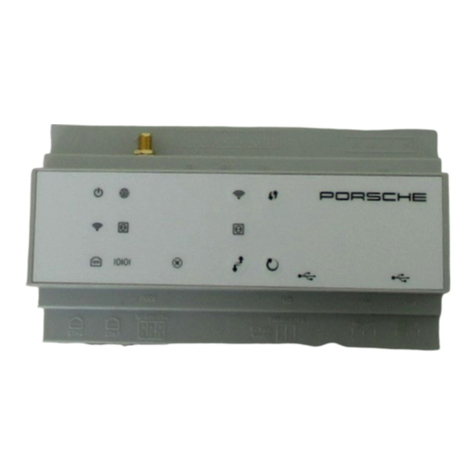
2
US
FC
ESM
PTB
TR
RU
UK
VIE
HE
AR
JPN
KOR
CHS
CHT
THA
Dr. Ing. h.c. F. Porsche AG is the owner of numerous
trademarks, both registered and unregistered,
including without limitation the Porsche Crest®,
Porsche®, Boxster®, Carrera®, Cayenne®, Cayman®,
Macan®, Panamera®, Spyder®, Tiptronic®, VarioCam®,
PCM®, PDK®, 911®, 718®, RS®, 4S®, 918 Spyder®,
FOUR, UNCOMPROMISED®, and the model numbers
and the distinctive shapes of the Porsche
automobiles such as, the federally registered 911
and Boxster automobiles. The third party trademarks
contained herein are the properties of their
respective owners. All text, images, and other
content in this publication are protected by
copyright. No part of this publication may be
reproduced in any form or by any means without prior
written permission of Porsche Cars North America,
Inc. Some vehicles may be shown with non-U.S.
equipment. Porsche recommends seat belt usage
and observance of traffic laws at all times.
© 2019 Porsche Cars North America, Inc.
Installation instructions
Please keep these installation instructions in a safe
place.
These instructions are intended for those persons
tasked with the installation, commissioning and
maintenance of the energy manager or who are
responsible for this.
Always observe and abide by the warnings and
safety instructions set out in these instructions.
The manufacturer assumes no liability in the event
of improper handling that contravenes the
information in these instructions.
Moreover, the approval conditions of the supplied
accessory parts must also be observed and
complied with.
Further instructions
Information on using the energy manager is provided
in the operating instructions. Pay particularattention
to the warning and safety instructions.
The instructions for the web application can be found
at https://www.porsche.com/international/
aboutporsche/e-performance/help-and-contact/
For other languages, select the desired country
version of the website.
Suggestions
Do you have any questions, suggestions or ideas
regarding these instructions?
Please contact us:
1-800-PORSCHE
Equipment
Since Porsche products undergo continuous
development, equipment and specifications may not
be as illustrated or described in these instructions.
Items of equipment are sometimes optional or vary
depending on the country in which the equipment is
sold. For information on retrofitting options, please
contact an authorized Porsche dealer. Porsche
recommends an authorized Porsche dealer, as they
have trained technicians and the necessary parts and
tools.
Warnings and symbols
Different types of warnings and symbols are used in
these instructions.
bPrerequisites that must be met in order to use
a function.
eInstructions that must be followed.
1. Instructions are numbered in cases where
a sequence of steps must be followed.
fIndicates where you can find more information
on a topic.
Designations
The following conventions are used in these
instructions:
– N = Neutral wire
– L = Outer conductor/phase
Item number Time of printing
9Y0.071.723.A-ROW 07/2020
Serious injury or death
Failure to observe warnings in the “Danger” category
will result in serious injury or death.
Possible serious injury or
death
Failure to observe warnings in the “Warning”
category can result in serious injury or death.
Possible moderate or
minor injury
Failure to observe warnings in the“Caution” category
can result in moderate or minor injuries.
Failure to observe warnings in the “Notice” category
can result in damage.
Information
Additional information is indicated using the word
“Information”.
9Y0071723A_ROW.book Page 2 Tuesday, July 21, 2020 3:04 PM






























